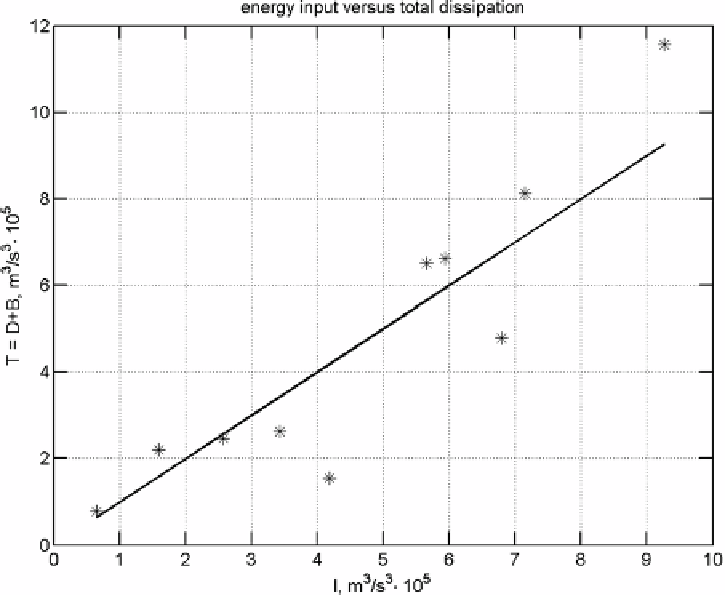Geoscience Reference
In-Depth Information
Figure 5.41 Total dissipation in the wave water column
T
a
(5.73)
versus measured total wind input
I
a
(denoted as
T
and
I
, respectively). Parameterisation
(5.74)
is used for integrating
D
a
in
(5.67)
.
Figure is reproduced from
Babanin
et al.
(
2005
)
times as fast. At stronger wind forcing, this effect slows down (see
Donelan
et al.
,
2006
,
Section 4.1.1
). Instantaneously, the wind capacity to effect breaking onset is marginal
unless the wind forcing is very strong. See
Section 4.1
and above sections of this chapter
for more discussion on this topic.
These conclusions were obtained by analysis of quasi-monochromatic wave trains. The
field waves are spectral and directional, and this fact adds an additional level of complexity
to the topic of wind forcing.
In the spectral environments, waves of different scales are present at the same time and
what is a low wind forcing for some components can inevitably be a strong or even very
strong forcing for others. The phase speed
c
of waves across the spectrum depends on
their frequency
(2.15)
, and therefore so does the wind forcing
U
(
f
)
.
If doubling wind forcing causes wave breaking four times faster, then doubling the wave
frequency according to
(2.18)
hypothetically should have the same effect in terms of the
wind forcing
U
/
c
(
f
)
/
c
. For example, if the wind speed is
U
10
=
7
.
8m
/
s, then at frequency
f
1
=
0
.
2 Hz there will be
U
10
/
c
(
f
1
)
=
1, whereas at frequency
f
2
=
2
f
1
=
0
.
4 Hz it will

Search WWH ::

Custom Search